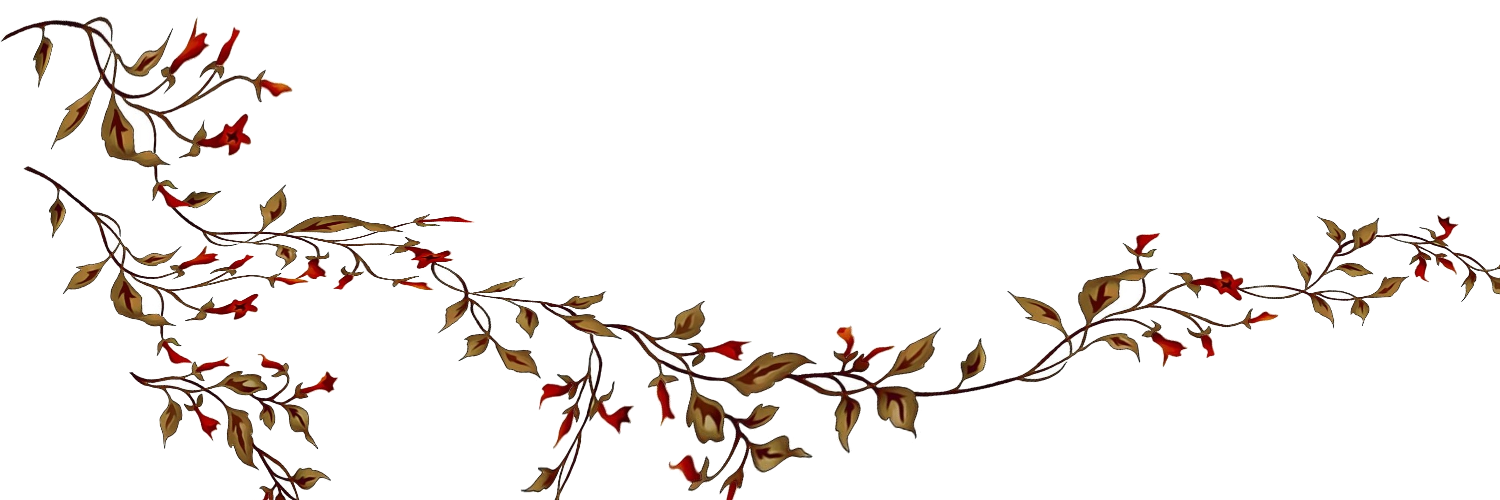
The taste of perfume, perfuming taste: the incongruous and subtle alliance of the goodness of senses
These checked tablecloths are curious. These wicker baskets are mischievous. They readily and quickly escape from wooden cupboards: spring is back. They set off to settle on the lawns, these naughty little heralds of the floral season. Should we follow them? Absolutely.
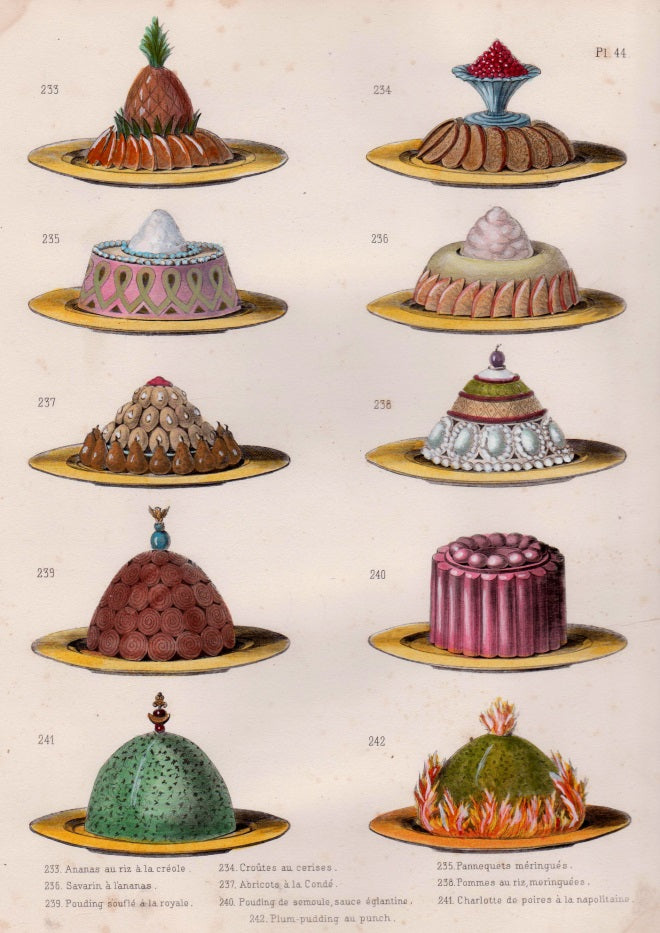
These checked tablecloths are curious. These wicker baskets are mischievous. They readily and quickly escape from wooden cupboards: spring is back. They set off to settle on the lawns, these naughty little heralds of the floral season. Should we follow them? Absolutely.
Illustration in the book La Cuisine Classique by Émile Bernard, Urbaine Dubois (1856)
We are told that the buds have given birth to flowers, whose postils herald the arrival of bees. Perfumes are exhaled, vegetables are saturated with colours under the prolonged kisses of the Brightest Star. These vegetables and herbs are strange birds. They fly to our palates with good omen carrying the inseparable taste of these first fruits of the sun. But... but... have we forgotten their scents?
It has already been a year - a happy and cheerful anniversary - since the Officine reminded us of these gustatory scents with a timely olfactory creation. This is the name of our famous perfume collection: The French Gardens of the Officine Universelle Buly: an intoxicating and singular palette of garden fragrances.
If the art of perfume is sparing of comparison - and only lives by itself to commune with the gods - the Officine pays tribute to vegetables and the cuisine of the senses: French culinary art. Through its august technicality and the flight of poetry it is willing to produce, it is the descendant of the goldsmith, the diamond cutter... or the master perfumer. This is less nonsense than historical accuracy: the intriguing thing about the 19th century is that it linked perfume and gastronomy through the braids of glory, where each won the kindness of an audience beyond its borders.
The Officine does not shy away from triviality, it always strives towards the cult of paradoxes and the celebration of elegance. Lovers of taste and smell: here you are on a converging path. If you enjoy the perfumed trails of the French Gardens of the Officine collection, you will love the delicate exhalation of dishes with enchanting combinations. These verses are yours!
“Gathering at table is also a sweet moment for confidences, a time to expand oneself. In every country in the world, the table is the meeting place for people who are friends or who want to become friends”.
Manuel des Amphytrions, 1808, Grimod de La Reynière
Salade Niçoise
By Auguste Escoffier*
Tuna in oil, tomato flesh, diced anchovy fillets. Seasoning: vinaigrette with chopped tarragon, chervil and chives, with or without mustard.
*recipes from “Ma Cuisine”, a recipe book by Auguste Escoffier (1846-1935), an illustrious figure who was crowned as “king of cooks, cook of kings” at the time.
Cheese with fruit: Bavarian cheese with redcurrants
By Marie-Antoine Carême*
Stone a pound of very sweet redcurrants, and four ounces of raspberries (≈ 110 grams). Press the whole with a fine cheesecloth, in order to express the quintessence of the juice, in which you mix eight ounces (≈ 220 grams) of fine sugar. When everything is perfectly amalgamated, put the preparation in a bowl with ice, and as soon as it begins to bind, mix in a plate of whipped cream, lace it then on the ice (≈ in the fridge).
*Carême (1784-1833) was the pinnacle of French cuisine in the 19th century. He put his talent at the service of the royal and imperial courts of France, Europe and the West. His penchant for architecture gave his buffet creations a monumental aspect.
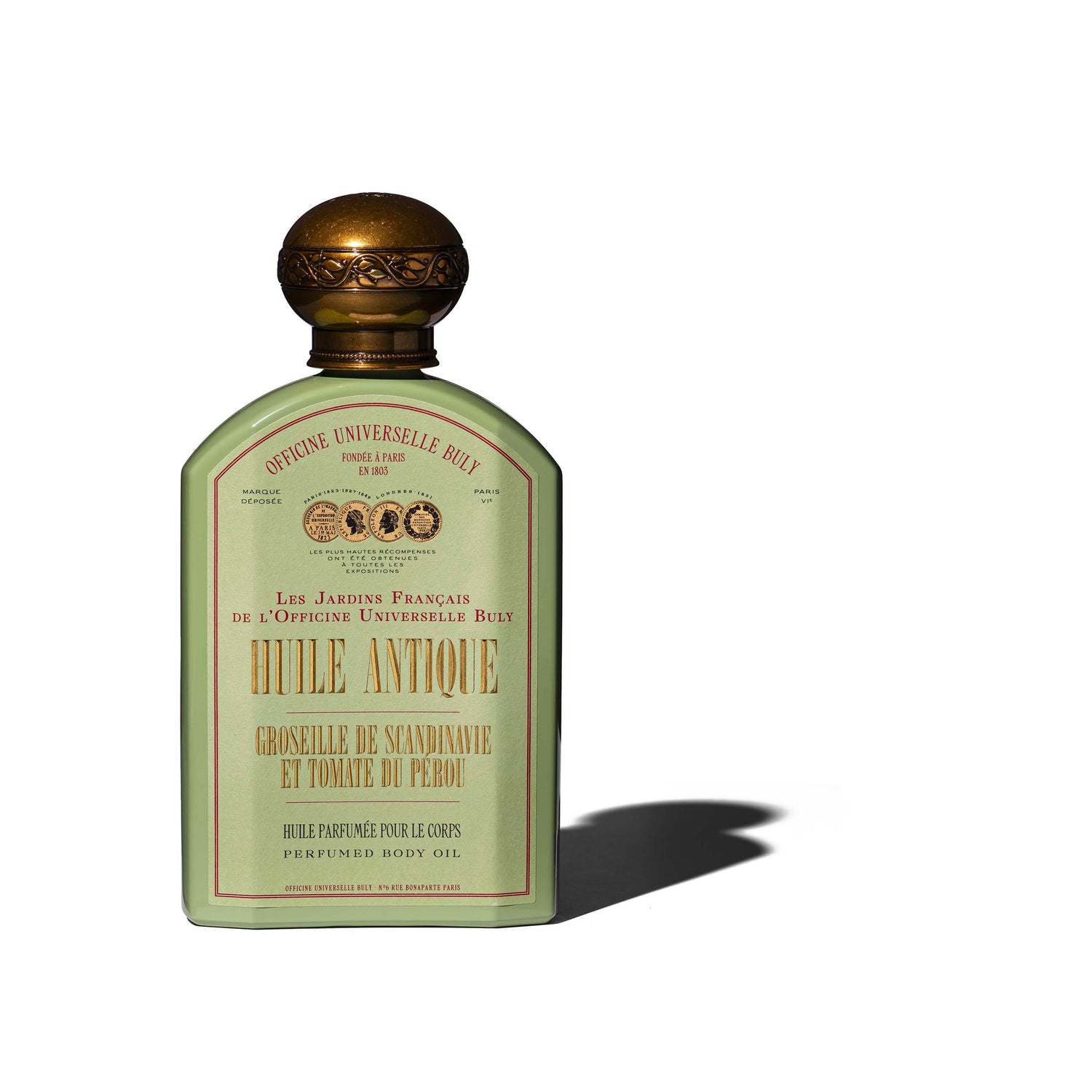
In order to recover from these many adventures, where fervour gilds itself in the fires of festivities, hands and arms must be nourished with the appropriate Huile Antique, Scandinavian Redcurrant and Peruvian Tomato.
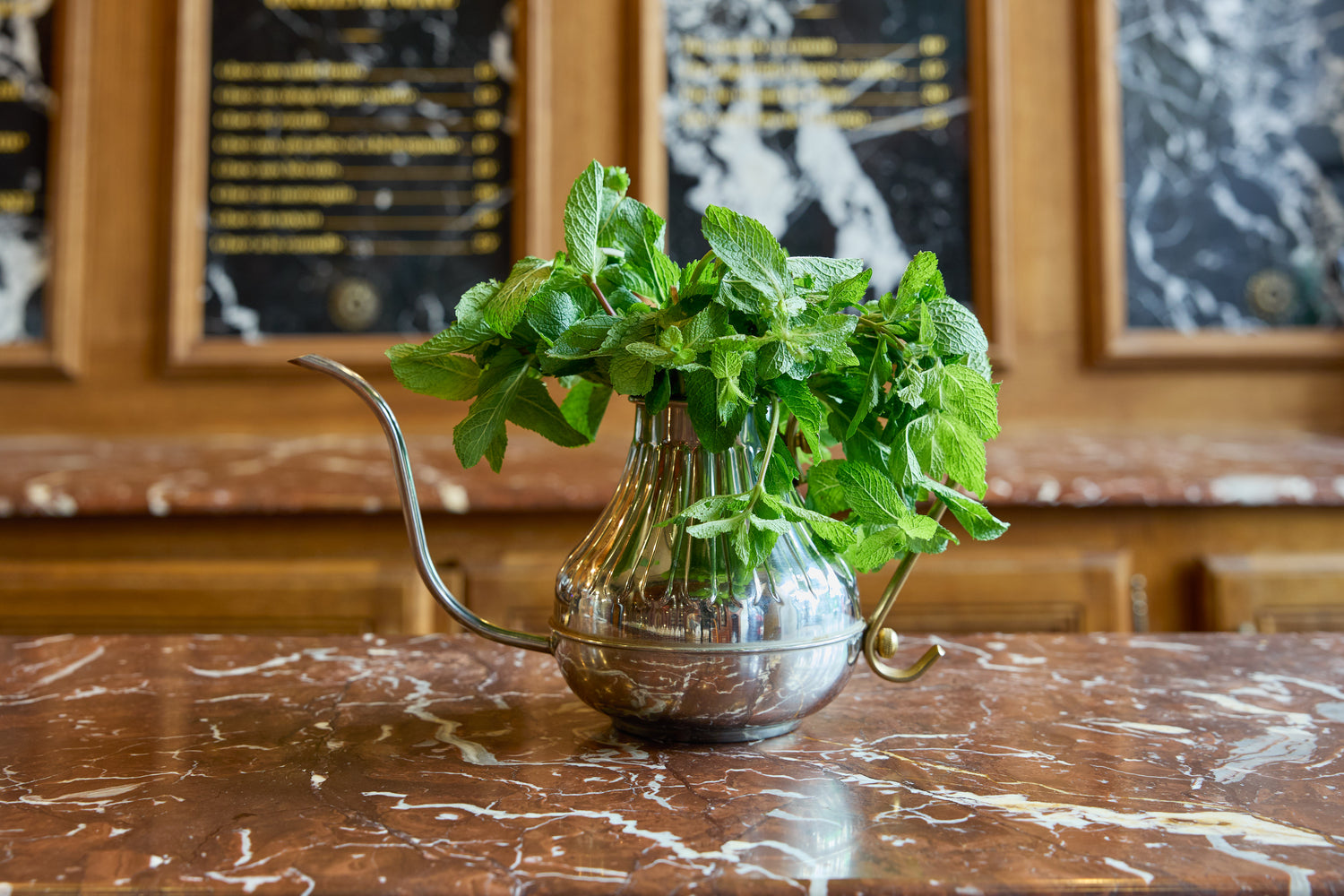
FRUITY AND SALTY ESSENCES IN A REFRESHING MINTY ACCORD
Réjane Salad*
Grain rice; sliced cucumber, cooked for a few minutes in salted water and well drained; chicken breast and truffles julienne. Seasoning: fine herb vinaigrette.
Cold mint sauce*
Chop 50 grams of mint leaves; collect in a bowl and add 2 tablespoons of caster sugar or very light brown sugar, 5 to 6 tablespoons of vinegar and a pinch of salt. Mix everything well. This sauce is a wonderful accompaniment to lamb, whether it is hot or cold.
*recipes from “Ma Cuisine”, a recipe book by Auguste Escoffier (1846-1935), an illustrious figure who was crowned as “king of cooks, cook of kings” at the time.
In order to introduce or prolong the benefits of these organoleptic pleasures, we recommend you wash your hands with Superfine Indian Cucumber and Syrian Mint Soap. This washing can be skillfully instigated between two culinary manipulations!
Wild chicory and beetroot
By Alexandre Dumas*
This wild chicory, a variety of endive, the leaves of which are eaten in salads, is one of the most highly regarded, very healthy and nourishing vegetables, perhaps even the best of all. It is usually eaten with beetroot strips and seasoned with salt, pepper, oil, vinegar and no herbs.
*Alexandre Dumas (father) was a French writer, famous for his works “Le Comte de Monte-Cristo”, “Les Trois Mousquetaires” and “La Reine Margot”, but also for his monumental dictionary to the glory of good food, “Le Grand dictionnaire de cuisine”.
Rhubarb pudding, desserts
By Émile Dumont*
1) Peel the stalks of the rhubarb leaves.
2) Cut them into pieces a quarter of the length of your little finger ; fill your pastry with them.
3) Sprinkle heavily with caster sugar or brown sugar and lemon zest.
4) Close your pastry as indicated for puddings. Rhubarb pudding is good, but like green currant pudding, it has the disadvantage of being very tangy.
*recipe from “La Bonne cuisine française. Tout ce qui a rapport à la table. Manuel-guide pour la ville et la campagne.” (« The Good French Cuisine. Everything related to the table. A manual-guide for both the city and the countryside.”), recipe book by Émile Dumont
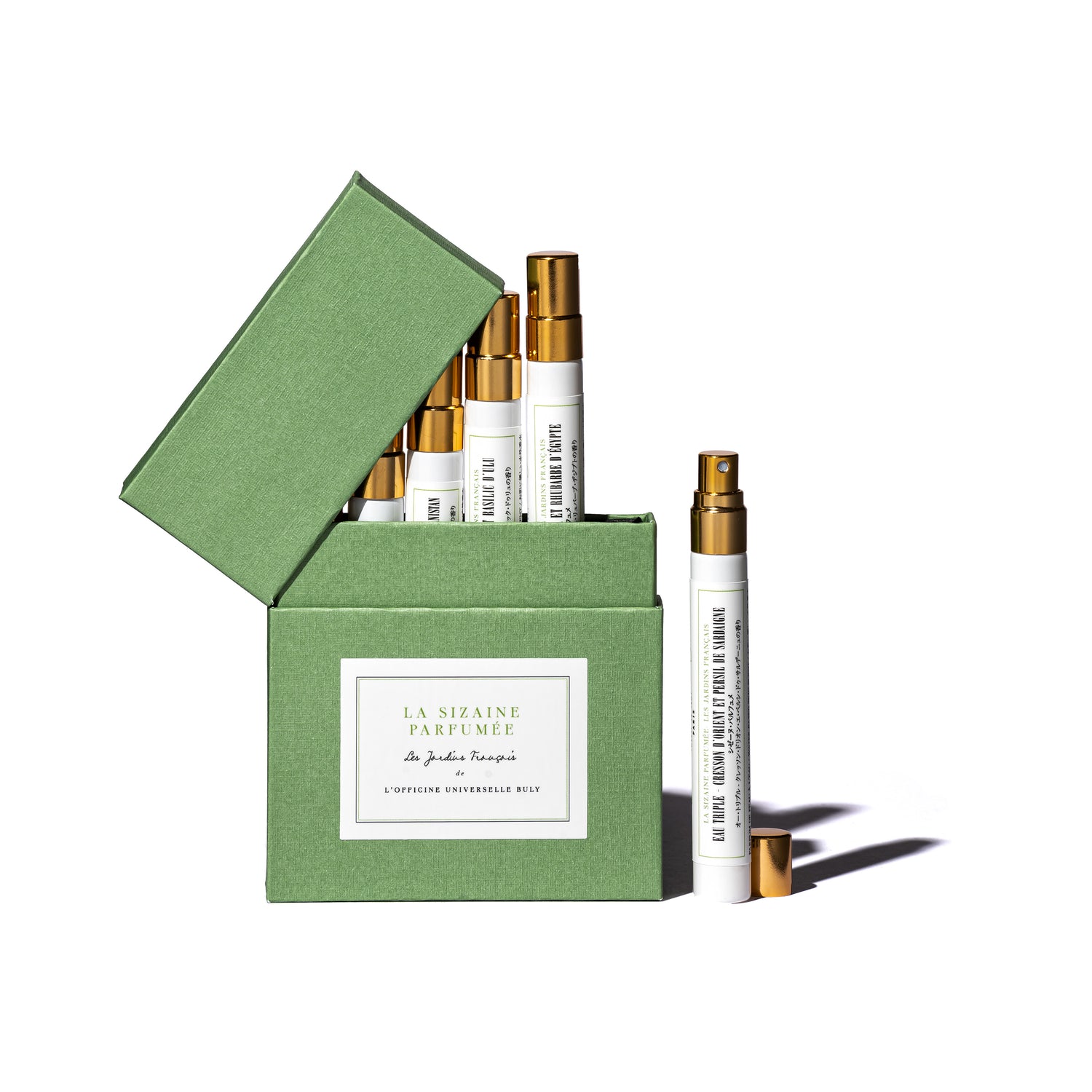
In order to complete this movement, the Sizaine Parfumée of the French Gardens is to the quintessence of perfume what a cookbook is to the organisation of skills!
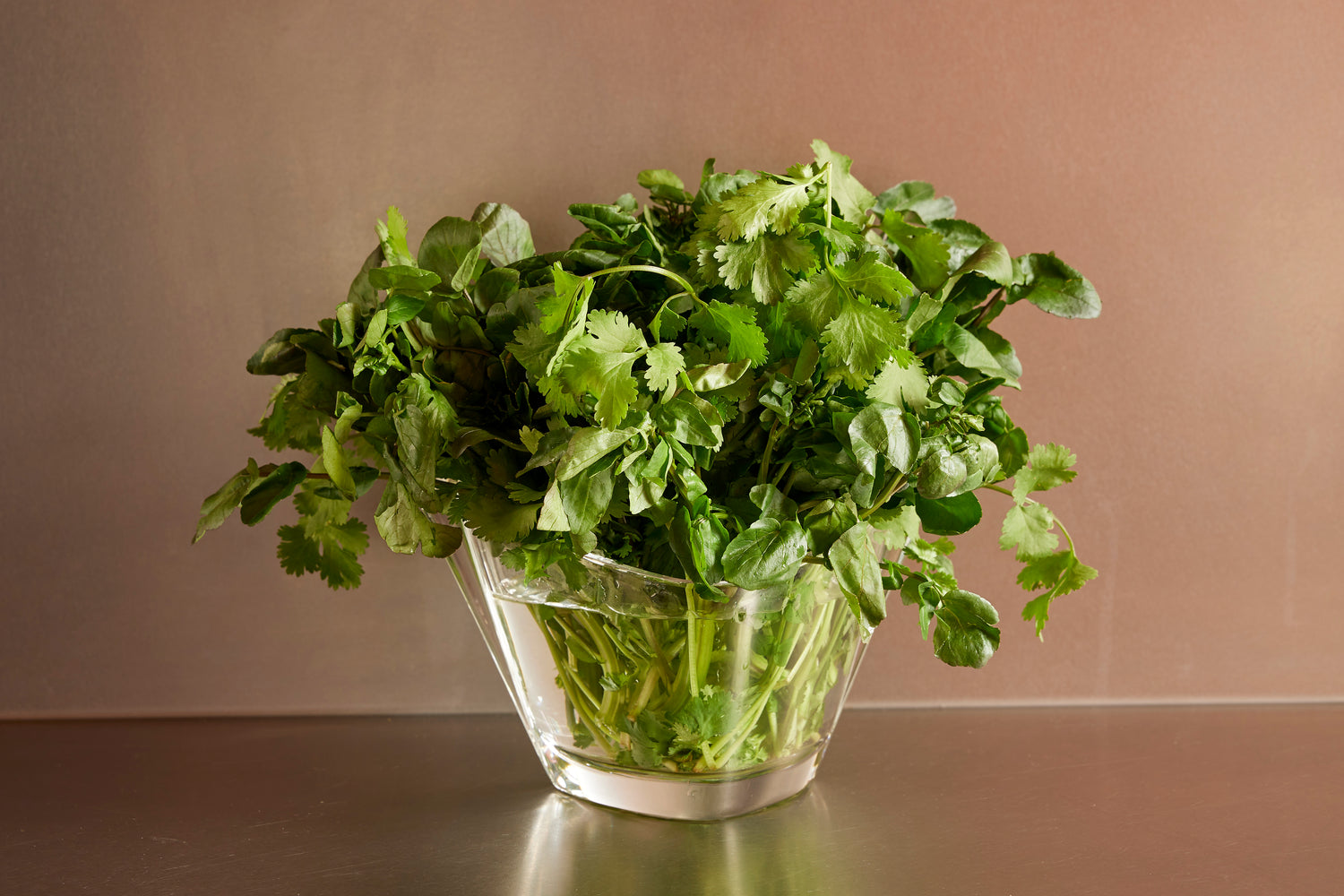
A GREEN AND WOODY SCENT MAGNIFIED BY A DUET OF GERANIUM AND VETIVER
Omelette with mixed vegetables*
While beating your eggs, add some finely chopped herbs and proceed as for an ordinary omelette. Add finely chopped chives, watercress, chervil and tarragon to the beaten eggs. Let’s not forget: a perfect garnish, parsley enhances the look and taste of any dish.
Green beans à la Maître-d’hôtel*
Boil them, then put them in a saucepan with a good piece of fresh butter, finely chopped parsley, salt and pepper. Give the pan a good stir and cook over a high heat for 10 minutes. Serve on a hot dish, with a little vinegar.
*acording to Marcel Butler, chef and editor of the “Carnet de la ménagère” for the 19th -century newspaper “L’Omnibus Illustré”.
The Officine recommends that before any recipe is prepared, and before any kind of task is taken on, a dash of Oriental Watercress and Sardinian Parsley Lait Virginal must be applied to the body as soon as you get out of the shower. Massaging, with virtuosity, is the best prerequisite for what is to follow in the kitchen.

1) Spread a shortcrust pastry on a dish and prick it with a fork. Brush a spoonful of mustard over the pastry. Brown 100 grams of bacon.
2) Chop the five tomatoes and two large mozzarellas.
3) Add the cooked bacon and garnish with herbs: oregano and basil. While all this is cooking and the oven is hot, prepare the velouté of six endives with two potatoes.
4) Sear on a scalded pan. Add stock and cook for 10 minutes with the lid on.
5) Pour into a potato masher and mix with a tablespoon of fresh cream, an egg yolk and some Parmesan cheese.
6) Serve the velouté before the pie, to give it time to cool slightly! But above all: grate some carrots in oil and pepper to give yourself a glow and carotene.
*since the 1980s, Marie-Thérèse Ordonez, called “Maïté”, on air every Tuesday in “La cuisine des Mousquetaires”, a first of its kind in France. The Gascon priestess and her local cuisine are as famous in France as Rossini’s Sonata a Quattro no.1, which features in the credits.
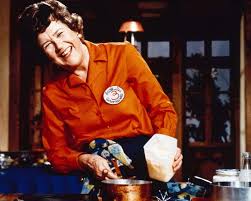
1) Bake or boil the sweet potatoes. Drain or remove the skins.
2) Place them in a bowl and mix in 3 tablespoons of butter, light cream or milk, orange juice, vanilla, sugar and cinnamon.
3) Mix with an electric mixer until smooth.
4) Melt the remaining butter in a bowl and stir in the brown sugar. Sprinkle the mixture over the sweet potatoes and bake at 180 degrees Celsius for 30 to 35 minutes.
5) Remove from the oven and place the mini-marshmallows on top, then bake until lightly browned.
*Julia Child s without doubt the most French of American chefs. After a career in US intelligence and the CIA, this diplomat’s wife discovered France in the 1960s. During this journey, she made a notable appearance on a literary programme where she presented her 734-page book on French cuisine.
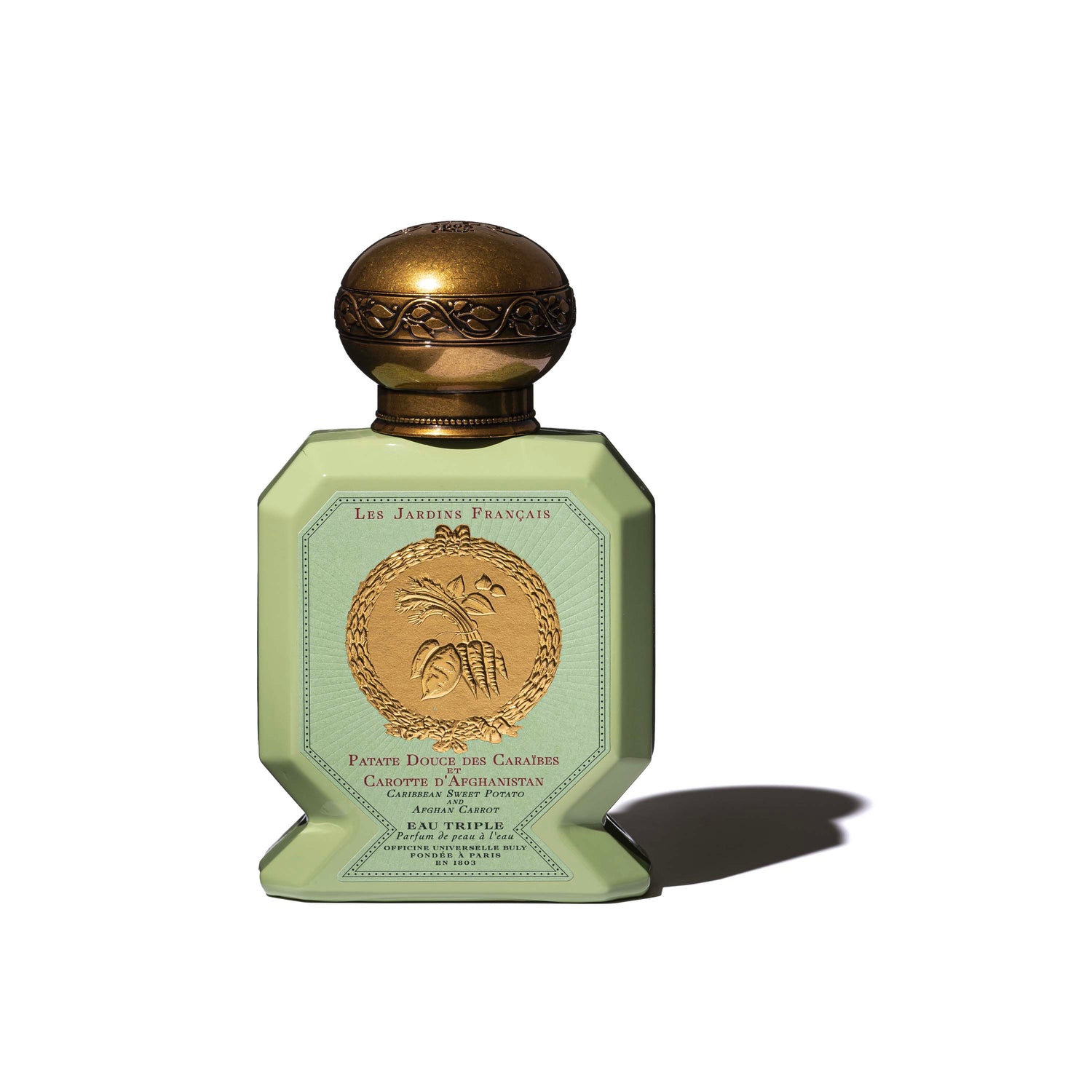
In order to recover from so many emotions, take a deep breath before your guests arrive. Exhale the fragrance of Caribbean Sweet Potato and Afghan Carrot, upon pressing the precious Eau Triple atomiser.
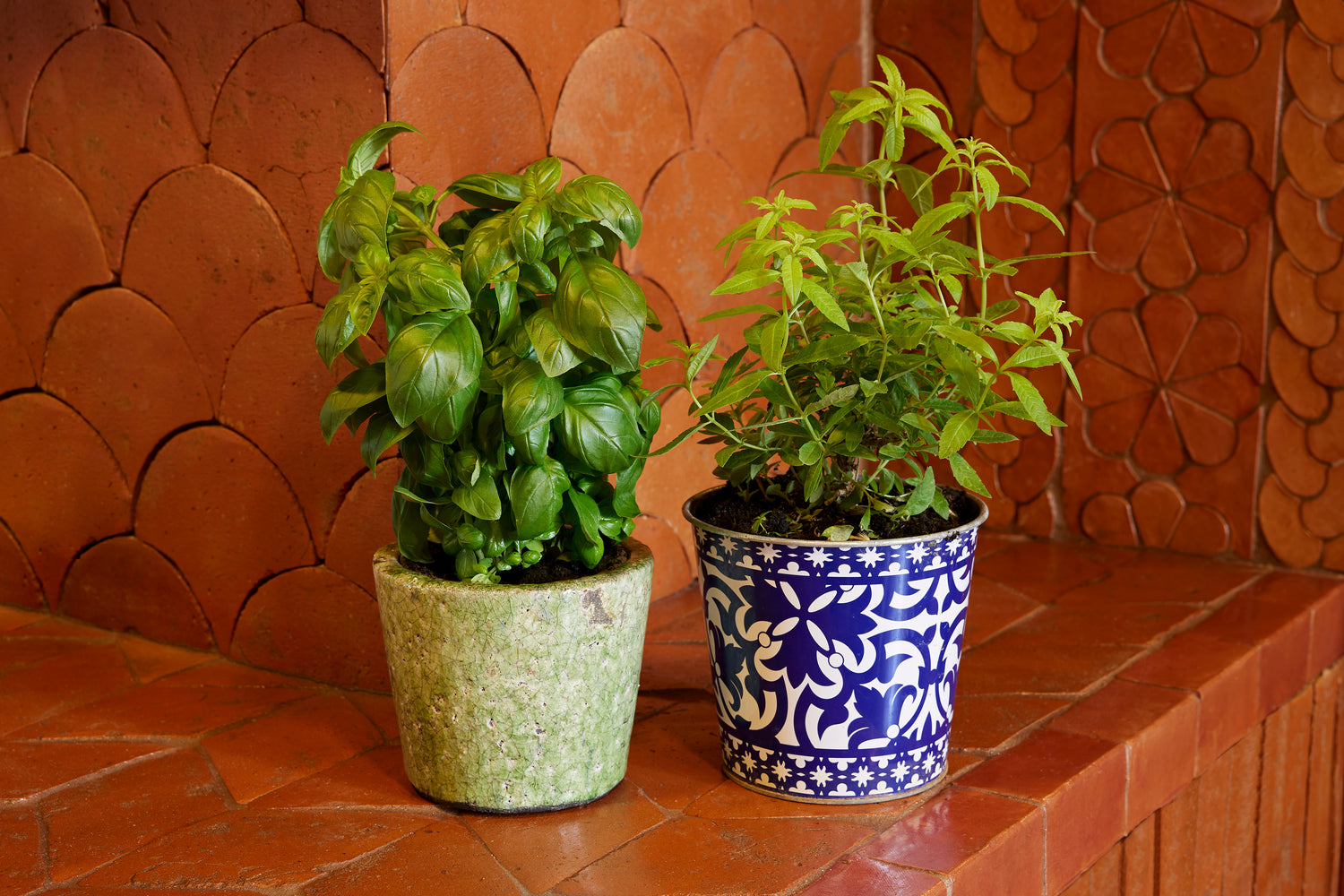
AN HERBACEOUS ACCORD WHERE AROMA, FLOWER AND ZEST COME TOGETHER IN HARMONY
There is no better way to say it than through the advice given by the French gastronome Brillat-Savarin: “Meat truffled with marrow, spread on toast buttered with basil”. As for the cheeses, Dumont notes that “the inside must be matt and have a nice fresh buttery hue. Cheeses that are completely ripe should be matt, light yellow, with no white in the middle and not runny. Serve with herbs, sage, thyme and verbena...”
May the beauty and blossoming of spring be prolonged with the regular use of Huile Antique, Lait Virginal and Superfine Andean Verbena and Ulu Basil Soap... These aromatic treasures enchant the minds on their immobile journeys. This is undoubtedly the eternal promise of perfumes, and the jubilant joy of palate flavours.
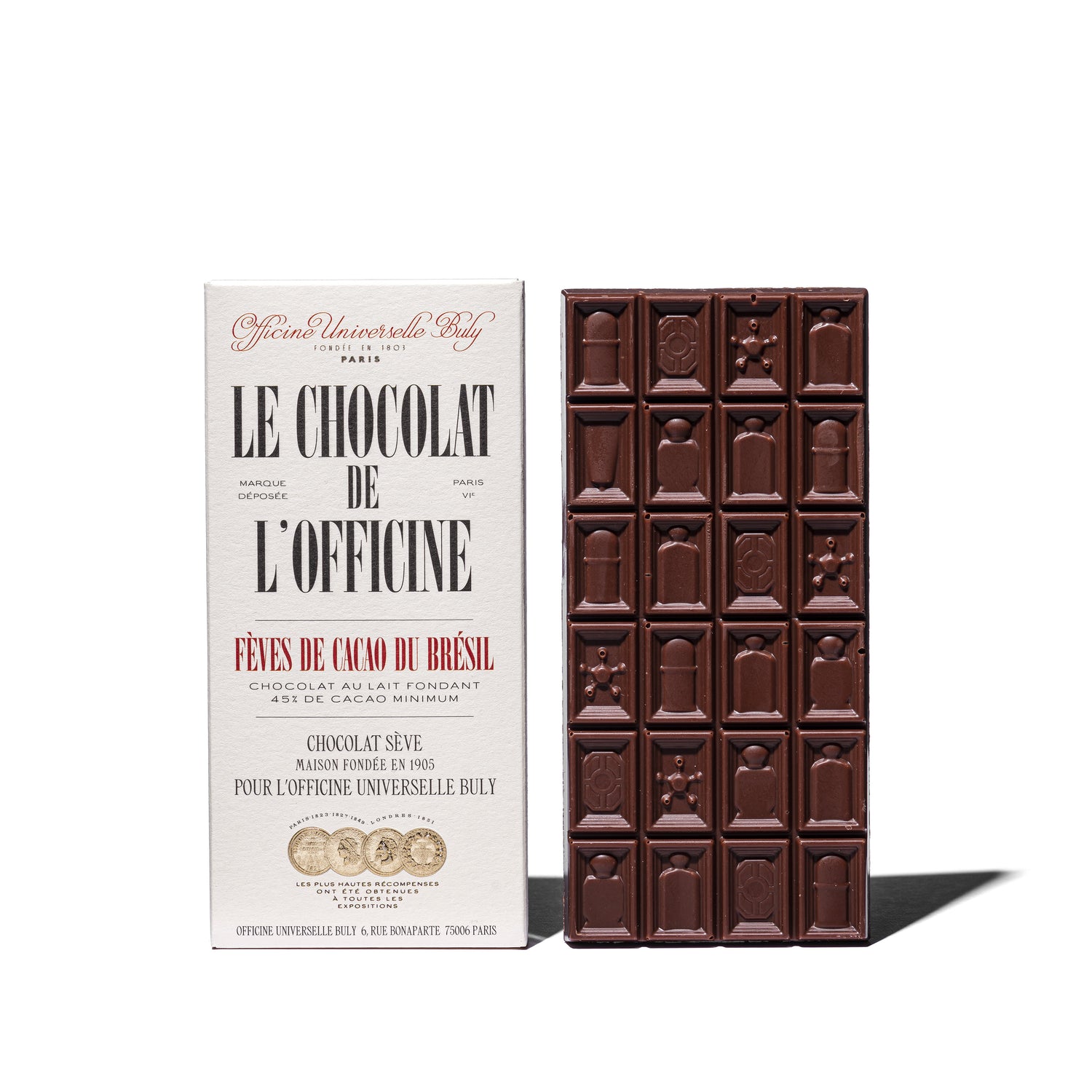
The return of the Officine’s chocolate, to culminate these spring moods with joy. There is no sweeter way to end a day’s work, a feast or a book than with a chocolate square bearing the image of our beloved Officine.
Sign up to receive future newsletters of The Officine.

We will send you an email to reset your password
Your cart is currently empty
Upon request, your purchases are wrapped in a printed paper reproducing an old newspaper or slipped into an elegant, green-marbled gift pochette, as an homage to the creation and history of the Officine Universelle Buly.
The Exceptional origata gift wrapWHETHER FLORAL, STRIPED OR CHECKERED, AND ALWAYS HIGHLY CHROMATIC, THESE JAPANESE PAPERS ARE INSPIRED BY THE MOTIFS RESERVED FOR KIMONOS AND ARE FOLDED ACCORDING TO THE HIGHLY CODIFIED ART OF ORIGATA.
Monogram gift wrapThe initials of the fortunate recipient are embossed on the elegantly textured gift paper. Gilded in the old-fashioned style, the initials are then highlighted with a velvet ribbon.
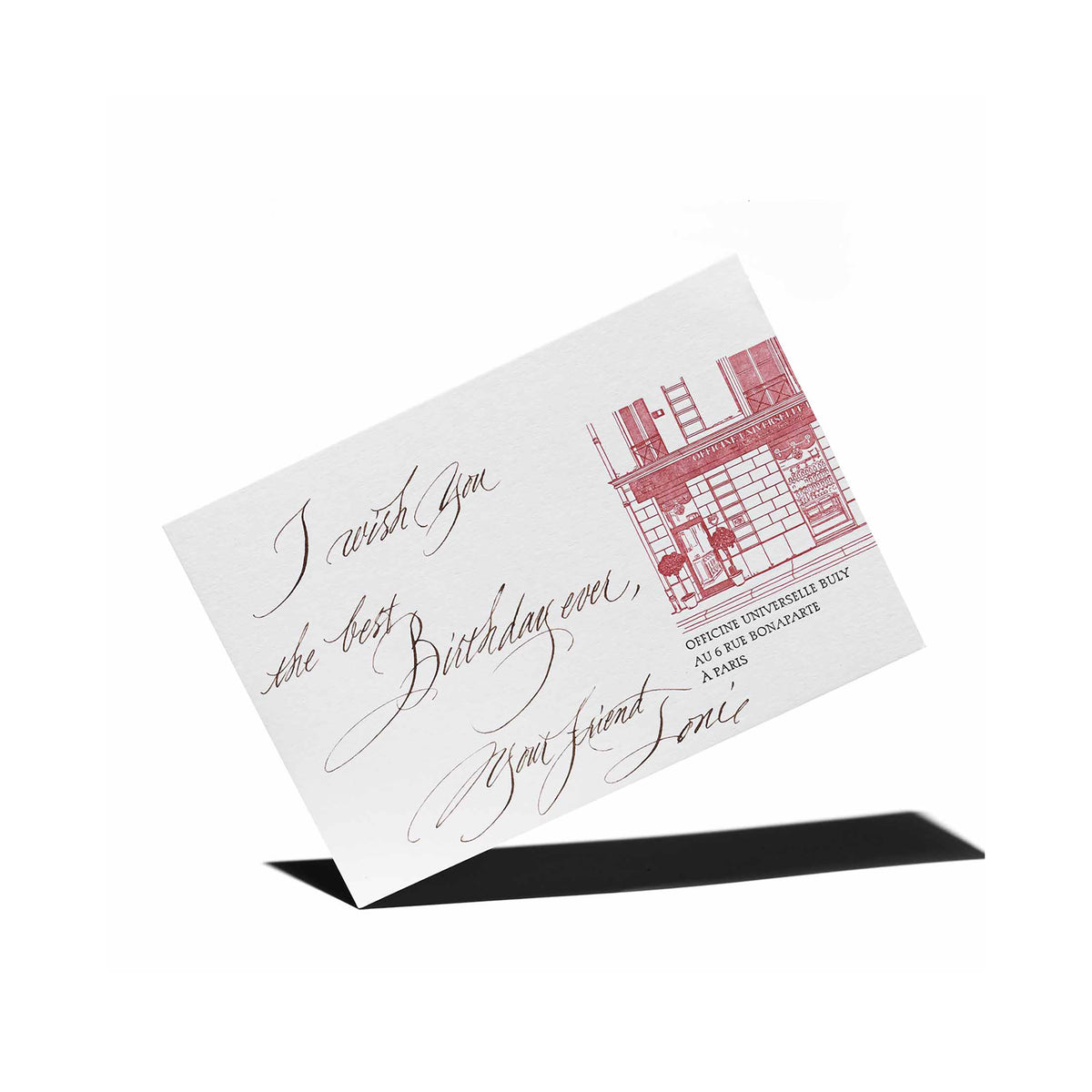
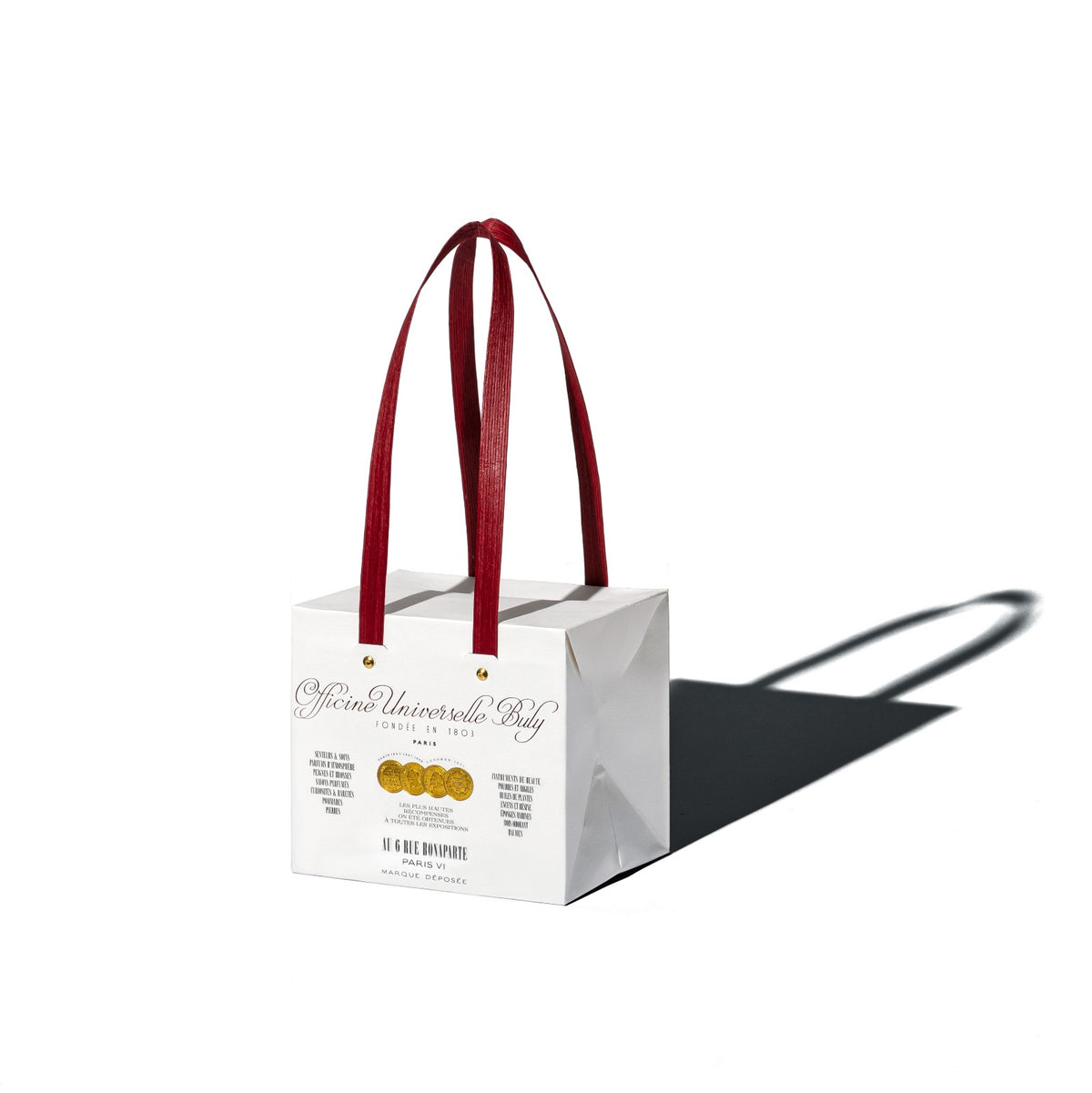
Choose the size of your bag
XS: Miniature case for small comb, soap or baume des muses ∙ 1,67 €
S: Travel companion for perfumed vials ∙ 1,67 €
M: Distinguished bag for scented candles and large books ∙ 1,67 €
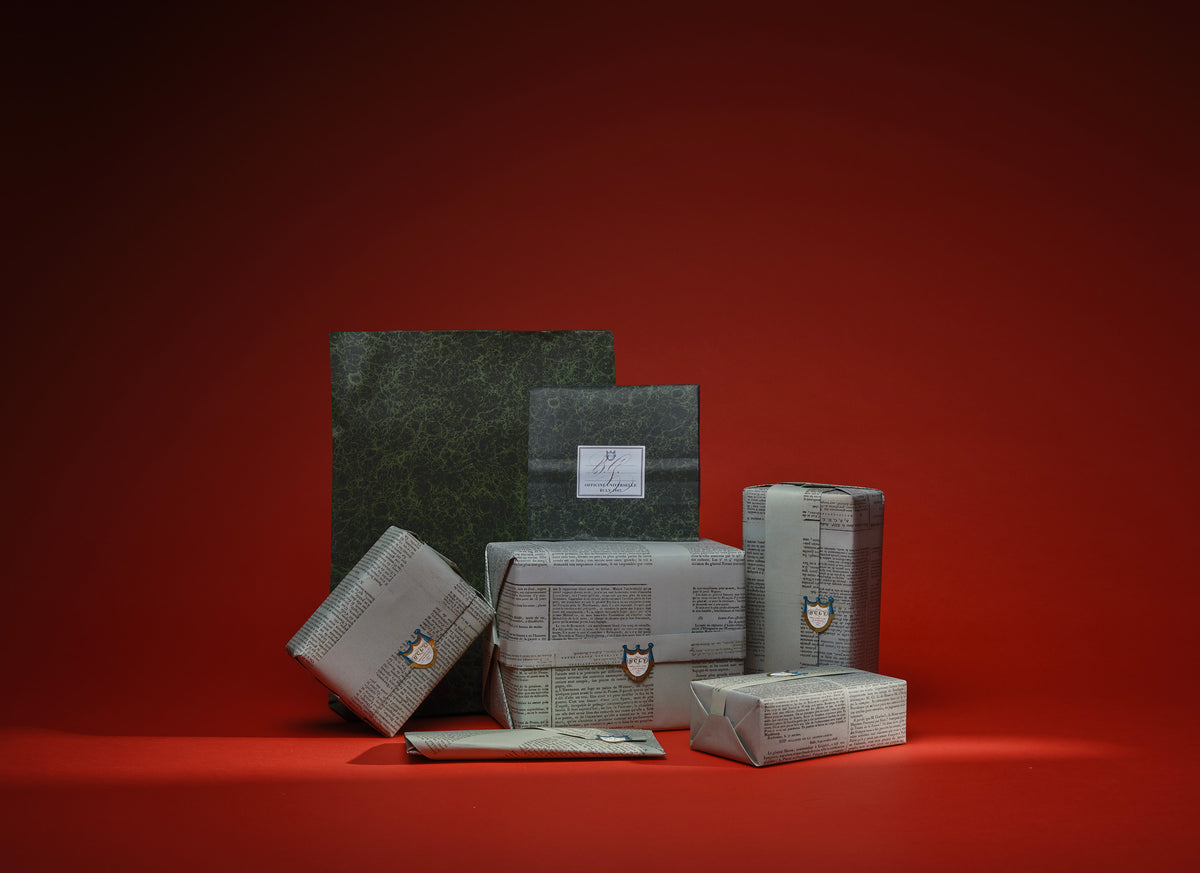
Select the products to be gift wrapped
These products are already gift-wrapped
None of the product in the cart are compatible with this service
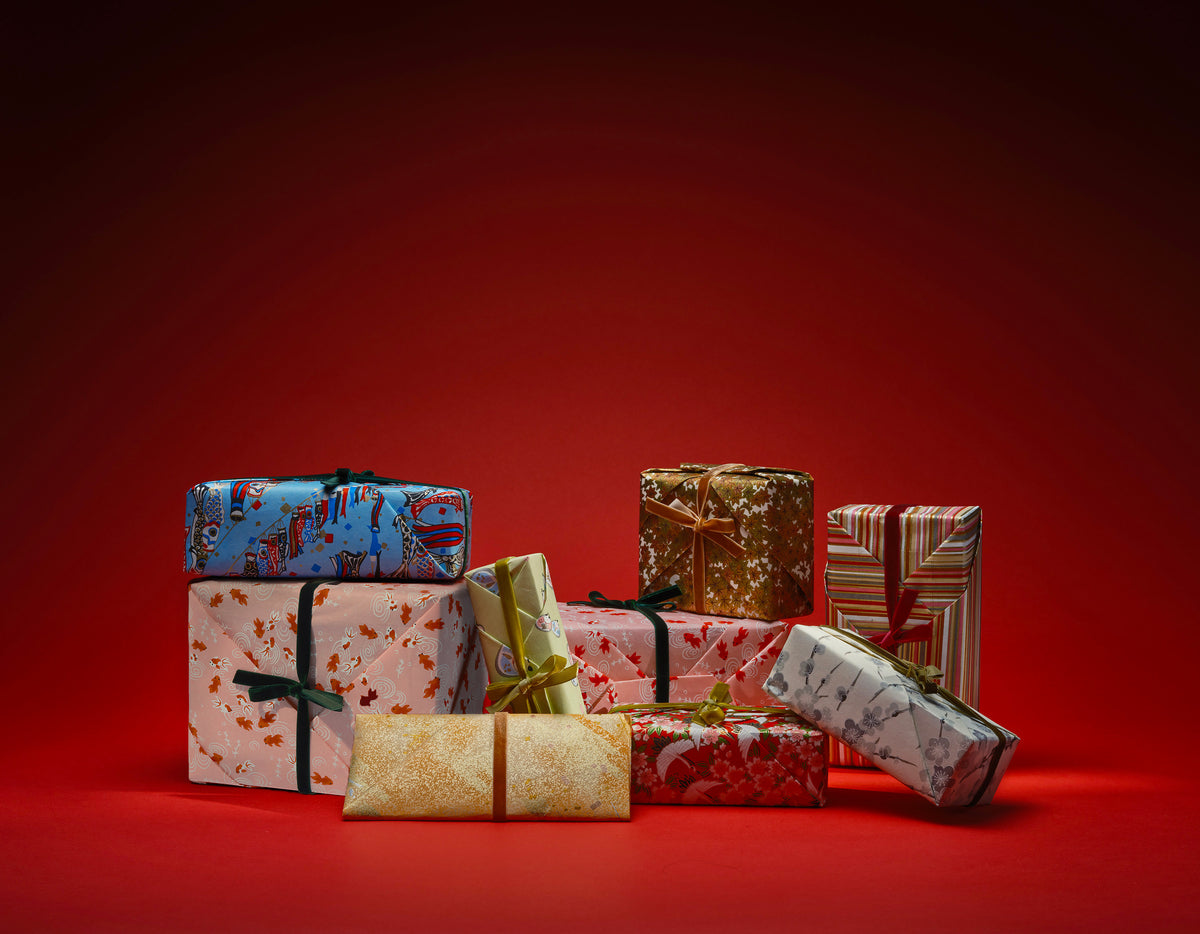
Select the products to be gift wrapped
These products are already gift-wrapped
None of the product in the cart are compatible with this service

Select the products to be gift wrapped
These products are already gift-wrapped
None of the product in the cart are compatible with this service
Every request will be respected as far as possible and the possibilities are great at Officine Universelle Buly.
Quantity :

Have your initials or those of the lucky recipient engraved in the heart of your Savon Superfin.
Have your accessory engraved with your initials, your name, or those of the person you’re gifting it to.
Have your initials or those of the lucky recipient of this gift engraved on the kit, the balm, the comb and on the toothbrush
Our bottles, candles and incenses are carefully packaged with handwritten calligraphy labels.
Our master calligrapher, armed with a quill and ancient ink pads, will create a wonderful bookplate on the title page.
We mail your calligraphic message directly to your recipient.
Please enter valid characters only
However, it seems that you are in Japan, would you like to switch to our Japanese website based in Tokyo?
Visit our StoreWe think you're in .
Update your delivery location?